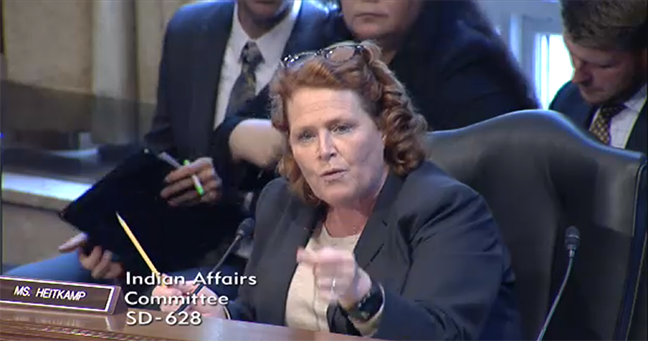WASHINGTON — Indian tribal lands are lacking basic access to Internet and telecommunications in the age of digital communication, according to lawmakers at a Senate Indian Affairs Committee hearing this week.
The lawmakers held the hearing to address broad technology gaps facing the Native American community.
Historically, Native Americans have lived on tribal lands that have suffered from inadequate Internet connections, according to a January 2016 report by the Government Accountability Office (GAO). It said officials from all 21 tribes interviewed said that Internet services exist at a variety of connection speeds. The report found that 41 percent of residents on tribal lands lack access to Internet services at the target speed compared to 10 percent nationwide.
Lack of connectivity to Internet broadband servers makes people on tribal lands even more isolated, according to Heather Thompson. For instance, when someone can’t access basic Internet, it’s challenging to apply for jobs and to access entrepreneurial websites that can help with the job search.
At the Wednesday hearing, Gigi Sohn, counselor to the chairman of the Federal Communications Commission, testified that there have been some recent improvements. Over the last eighteen months, the commission’s Office of Native Affairs and Policy modernized two Internet service programs that could potentially bridge the digital divide on tribal lands.
One of them, the Lifeline program, helps make communications services more affordable for low-income consumers.
The GAO recommended that the commission do a better job of coordinating its programs for providing low cost Internet access to people on tribal lands with the U.S. Department of Agriculture, which has similar programs. Currently, that lack of coordination creates “missed opportunities.”

Sen. Heidi Heitkamp, D-N.D., discussed the current condition of connectivity on tribal land in North Dakota. She said some of the residents on the lands only connection to Internet are through their phone.
“I had people talking about typing up a paper, putting it on their cell phone, then driving out to the highest point in the reservation and holding their cell phone up and hoping that that paper transmitted to the professor at UND [University of North Dakota],” said Heitkamp.
Godfrey Enjady, president of the National Tribal Telecommunications Association, defended the Internet providers, telling lawmakers that the GAO report acknowledges hat they face unique challenges when attempting to bring broadband services to tribal areas.
“Indian country still lacks a lot of infrastructure for broadband,” said Enjady, who is also the founder of one of the providers, Mescalero Apache Telecom, Inc. “Those are some of the key things that we need to really focus on.”
Enjady also said he was concerned that proposed reforms are coming at the very end of the Obama administration. “Hopefully the new administration coming in will tackle this problem and keep moving forward,” he said.
Some senators said they want more detail so they can better understand the problem. They questioned if the 41 percent connectivity rate includes local school access, or just home access.
The FCC’s Sohn agreed, saying there could be more reliable numbers on the metrics for Internet access on tribal land, and that there is a lot of work to be done.
“Without a doubt, we could do a lot better. We want to work with you [Sen. Udall] and we want to work with our partners in the federal government to try to close that gap,” said Sohn.

